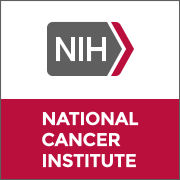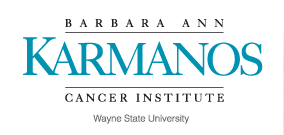Request Demo
Last update 08 May 2025
HDACs x AR x KLK3
Last update 08 May 2025
Related
1
Drugs associated with HDACs x AR x KLK3Target |
Mechanism AR antagonists [+2] |
Active Org. |
Originator Org. |
Active Indication |
Inactive Indication |
Drug Highest PhasePhase 3 |
First Approval Ctry. / Loc.- |
First Approval Date20 Jan 1800 |
8
Clinical Trials associated with HDACs x AR x KLK3NCT02483624
A Single-Blind, Placebo-Controlled Study to Evaluate the Safety, Tolerability, and Pharmacodynamics of 3,3'-Diindolylmethane (BR-DIM) in Patients With Systemic Lupus Erythematosus (SLE)
This is a single center study of patients with inactive or mild SLE being performed to determine the safety, tolerability, and pharmacodynamics of DIM.
Start Date01 Jan 2016 |
Sponsor / Collaborator |
NCT01612910
A Pilot Study of BR-DIM in Women With Stage II-III, Triple Negative, and Androgen Receptor Positive, Invasive Breast Cancer, Who Have Residual Disease Following Surgical Resection After Neoadjuvant Chemotherapy
This study is being done to find out whether a nutritional supplement, called BioResponse-DIM (BR-DIM [oral microencapsulated diindolylmethane]), improves the survival for women who have residual cancer cells following surgery after chemotherapy for breast cancer. BR-DIM is an active ingredient in cruciferous vegetables (broccoli, brussels sprouts and cauliflower). Consumption of these vegetables has been associated with a decreased risk in several cancers. Researchers also hope to find out whether different biomarkers (also called "markers") in the blood predict the chance of breast cancer returning. BR-DIM is thought to be effective in treating stage II-III breast cancer that is triple negative, AR positive (+), and where there is residual cancer cells in the breast after chemotherapy.
Start Date01 Jun 2012 |
Sponsor / Collaborator |
NCT01391689
Evaluation of Diindolylmethane Supplementation to Modulate Tamoxifen Efficacy in Breast Cancer The Diindolylmethane Efficacy Study
This phase II/III trial studies how well diindolylmethane (DIM) works and compares it to placebo in treating patients with breast cancer. DIM may slow the growth of tumor cells and be an effective treatment for breast cancer.
Start Date01 Feb 2011 |
Sponsor / Collaborator |
100 Clinical Results associated with HDACs x AR x KLK3
Login to view more data
100 Translational Medicine associated with HDACs x AR x KLK3
Login to view more data
0 Patents (Medical) associated with HDACs x AR x KLK3
Login to view more data
39
Literatures (Medical) associated with HDACs x AR x KLK301 May 2021·Cancer LettersQ1 · MEDICINE
Androgen deprivation-induced elevated nuclear SIRT1 promotes prostate tumor cell survival by reactivation of AR signaling
Q1 · MEDICINE
Article
Author: Huang, Shih-Bo ; Lai, Z ; Yang, X ; Ghosh, R ; Thapa, D ; Wang, Li-Ju ; Rivas, P ; Hussain, S S ; Chiu, Yu-Chiao ; Bedolla, R G ; Gaczynska, M E ; Miyamoto, H ; Kumar, A P ; Munoz, A R ; Chen, Y ; Shudde, C ; Osmulski, P ; Reddick, R L
15 Mar 2021·AgingQ3 · MEDICINE
Discovery of a novel AR/HDAC6 dual inhibitor for prostate cancer treatment
Q3 · MEDICINE
Article
Author: Zheng, Hao ; Zhou, Maojun ; Huang, Huichao ; Chen, Zhuchu ; Li, Yubin ; Min, Xiaoli ; Xu, Guangyu ; Zhou, Wenqiang ; Chen, Yongheng ; Dai, Shuyan
03 Sep 2019·Drug and Chemical ToxicologyQ4 · MEDICINE
The application of the improved 3D rat testicular cells co-culture model on thein vitrotoxicity research of HZ1006
Q4 · MEDICINE
Article
Author: Tian, Yijun ; Shi, Wenjing ; Ren, Lijun ; Zhu, Jiangbo ; Zhang, Tianbao ; Yan, Han ; Zhang, Xiaofang ; Zhu, Yuping
Analysis
Perform a panoramic analysis of this field.
login
or

AI Agents Built for Biopharma Breakthroughs
Accelerate discovery. Empower decisions. Transform outcomes.
Get started for free today!
Accelerate Strategic R&D decision making with Synapse, PatSnap’s AI-powered Connected Innovation Intelligence Platform Built for Life Sciences Professionals.
Start your data trial now!
Synapse data is also accessible to external entities via APIs or data packages. Empower better decisions with the latest in pharmaceutical intelligence.
Bio
Bio Sequences Search & Analysis
Sign up for free
Chemical
Chemical Structures Search & Analysis
Sign up for free



